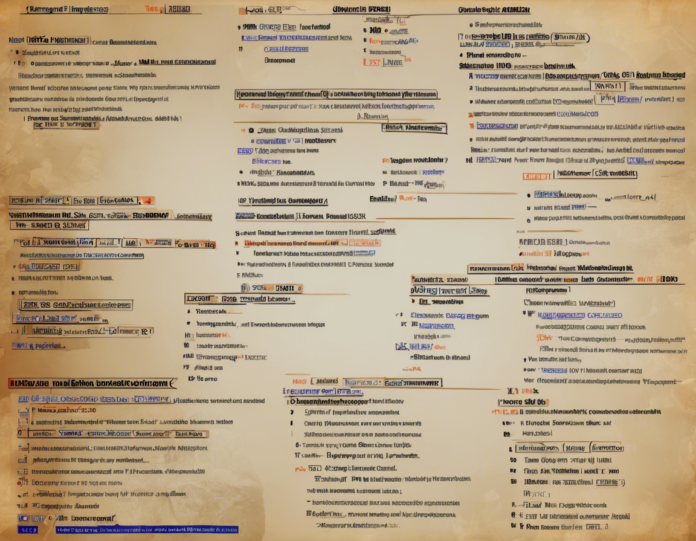Introduction:
Understanding Primary Sclerosing Cholangitis (PSC) can be challenging due to its complexity and rarity. This chronic liver disease affects the bile ducts, leading to inflammation, scarring, and ultimately, bile flow impairment. In this comprehensive guide, we will delve deeper into the intricacies of PSC, including its causes, symptoms, diagnosis, treatment options, and prognosis.
What is Primary Sclerosing Cholangitis (PSC)?
Primary Sclerosing Cholangitis (PSC) is a rare, chronic liver disease characterized by inflammation and scarring (fibrosis) of the bile ducts inside and outside the liver. This scarring narrows the bile ducts, leading to the obstruction of bile flow. Over time, this can cause serious complications such as cirrhosis, liver failure, and bile duct cancer (cholangiocarcinoma).
Causes of Primary Sclerosing Cholangitis:
The exact cause of Primary Sclerosing Cholangitis remains unknown. However, it is believed to be an autoimmune condition, where the body’s immune system mistakenly attacks the bile ducts, triggering inflammation and scarring. Genetic predisposition may also play a role in the development of PSC.
Symptoms of Primary Sclerosing Cholangitis:
The symptoms of Primary Sclerosing Cholangitis can vary from person to person and may include:
- Fatigue
- Itching (pruritus)
- Jaundice (yellowing of the skin and eyes)
- Abdominal pain
- Fever
- Unexplained weight loss
- Chills
- Osteoporosis
- Malabsorption of fat and fat-soluble vitamins
- Dark urine
- Pale-colored stools
It is essential to note that some individuals with PSC may be asymptomatic and only discover the condition during routine blood tests or imaging studies.
Diagnosis of Primary Sclerosing Cholangitis:
Diagnosing Primary Sclerosing Cholangitis can be challenging due to its nonspecific symptoms and similarities to other liver conditions. The following diagnostic tests may be used to confirm PSC:
- Blood tests: Elevated liver enzymes and other markers of liver function may indicate bile duct inflammation.
- Imaging studies: Magnetic Resonance Cholangiopancreatography (MRCP) or Endoscopic Retrograde Cholangiopancreatography (ERCP) can visualize the bile ducts and detect narrowing or blockages.
- Liver biopsy: A sample of liver tissue may be examined under a microscope to confirm inflammation and scarring.
Treatment Options for Primary Sclerosing Cholangitis:
As of now, there is no cure for Primary Sclerosing Cholangitis. Treatment aims to manage symptoms, prevent complications, and slow down disease progression. The following interventions may be recommended:
- Ursodeoxycholic acid: This medication may help improve liver function and bile flow.
- Anti-inflammatory drugs: Corticosteroids or other immunosuppressants may be prescribed to reduce inflammation.
- Endoscopic therapy: Balloon dilation or stent placement can help alleviate bile duct strictures.
- Liver transplant: In advanced cases of PSC, a liver transplant may be necessary to replace the damaged liver with a healthy one.
Prognosis of Primary Sclerosing Cholangitis:
The prognosis of Primary Sclerosing Cholangitis varies depending on the individual’s age, overall health, and the presence of complications such as cirrhosis or cholangiocarcinoma. In general, PSC is a progressive disease that may eventually lead to liver failure or the need for a liver transplant. Regular monitoring and early intervention are crucial in managing PSC and improving outcomes.
FAQs (Frequently Asked Questions):
Q1: Is Primary Sclerosing Cholangitis a common condition?
A: No, Primary Sclerosing Cholangitis is considered a rare disease, affecting approximately 1 in 100,000 people.
Q2: Can Primary Sclerosing Cholangitis be cured?
A: Currently, there is no cure for Primary Sclerosing Cholangitis. Treatment focuses on symptom management and disease progression.
Q3: Are there any risk factors for developing Primary Sclerosing Cholangitis?
A: While the exact cause is unknown, having other autoimmune conditions such as inflammatory bowel disease (IBD) may increase the risk of developing PSC.
Q4: How is Primary Sclerosing Cholangitis different from Primary Biliary Cholangitis?
A: Primary Sclerosing Cholangitis and Primary Biliary Cholangitis are two distinct liver diseases with different causes and characteristics. PSC affects the larger bile ducts, while PBC affects the smaller bile ducts within the liver.
Q5: Can diet and lifestyle changes help manage Primary Sclerosing Cholangitis?
A: While diet and lifestyle modifications may help improve overall health and well-being, they are not a substitute for medical treatment in Primary Sclerosing Cholangitis. Consult with a healthcare provider for personalized recommendations.
In conclusion, Primary Sclerosing Cholangitis is a complex liver disease that requires ongoing management and monitoring. By understanding the causes, symptoms, diagnosis, treatment options, and prognosis of PSC, individuals and healthcare providers can work together to optimize care and quality of life for those affected by this condition.












